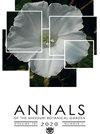恢复的生态系统能持续多久?1.
IF 1.1
3区 生物学
Q3 PLANT SCIENCES
引用次数: 32
摘要
摘要为什么一些恢复的生态系统持续了几个世纪,而另一些生态系统却很快转变为替代土地用途或土地覆盖?我们提出,恢复的生态系统具有可变的、往往是有限的时间维度,并且可能在某种程度上基于利益相关者、环境和治理的属性而可预测。恢复生态系统的寿命对其支持生物多样性和提供生态系统服务的能力有很大影响,因此恢复生态学面临的一个新挑战是预测恢复生态系统持续更长或更短时间的情况。我们使用热带森林恢复的案例研究来证明一种可以定量评估恢复生态系统寿命的方法,并强调了未来使用恢复案例研究库、从业者调查和历史航空图像进行研究的机会。还有很多需要学习,但决策者和从业者很可能有相当大的影响力来增加恢复后的生态系统持续到未来的可能性,从而扩大当代恢复举措的好处。本文章由计算机程序翻译,如有差异,请以英文原文为准。
How Long Do Restored Ecosystems Persist?1
Abstract Why do some restored ecosystems persist for centuries while others are quickly converted to alternative land uses or land covers? We propose that restored ecosystems have a temporal dimension that is variable, often finite, and likely predictable to some extent based on attributes of stakeholders, environment, and governance. The longevity of a restored ecosystem carries strong implications for its capacity to support biodiversity and provide ecosystem services, so an emerging challenge for restoration ecology is to predict the circumstances under which restored ecosystems persist for longer or shorter periods of time. We use a case study in tropical forest restoration to demonstrate one way that restored ecosystem longevity can be approached quantitatively, and we highlight opportunities for future research using restoration case study repositories, practitioner surveys, and historical aerial imagery. Much remains to be learned, but it is likely that decision-makers and practitioners have considerable leverage to increase the probability that restored ecosystems persist into the future, extending the benefits of contemporary restoration initiatives.
求助全文
通过发布文献求助,成功后即可免费获取论文全文。
去求助
来源期刊
CiteScore
3.60
自引率
0.00%
发文量
15
期刊介绍:
The Annals of the Missouri Botanical Garden is a quarterly international journal primarily devoted to systematic botany and evolutionary biology. We encourage submissions of original papers dealing with significant advances in the taxonomy, phylogeny, biogeography, paleobiology, and evolution of plants, and in conservation genetics and biology, restoration ecology, and ethnobiology, using morphological and/or molecular characters, field observations, and/or database information. We also welcome reviews and papers on conceptual issues and new methodologies in systematics. Important floristic works will also be considered. Symposium proceedings discussing a broader range of topical biological subjects are also published, typically once a year. All manuscripts are peer-reviewed by qualified and independent reviewers.

 求助内容:
求助内容: 应助结果提醒方式:
应助结果提醒方式:


